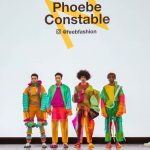
Why I chose to study Graphic Communication
Our Graphics courses at NUA are unique. During the first year, students dabble in all four specialisms, before choosing their route to pursue in year two and three. In this blog, Year 2 student Nat Dalkiewicz tells us all about why they chose to pursue BA (Hons) Graphic Communication.
What is Graphic Communication?
I’d personally describe the essence of Graphic Communication as the portrayal of a message, rather than a particular product or story, though these do also come into play through the variety of projects we work on.
On this course we focus on advertising, visual identity, type, and motion graphics. We are also free to include or push any other aspect of our practice, such as editorial work, into our projects because of how open many of our briefs are.
Why did you choose to pursue Graphic Communication out of all the graphics options?
After Year One and getting a taste of projects from all the different graphics courses, I realised I wasn’t interested in packaging as much as I thought and instead, realised I’m extremely passionate about design for good.
I also chose to pursue Graphic Communication because of the creative freedom this course offers.
What’s your favourite piece of work you’ve produced so far and why?
Being between a few projects at the moment, my favourite piece of work so far might be the first piece of motion I produced as part of out Type in Motion brief.
It was the first time I was using Adobe After Effects and I think it was a really fun and light-hearted project, while also being an opportunity to develop my software skills.
How do you see the future of the industry looking?
Due to technological advances, the future of the industry appears to be heading in a heavily digital direction. Knowing this there is a push to develop our motion skills and include this in our body of work.
What sort of mark would you like to make in the world?
I want to create conversation starters. No matter the medium, I want my work to get people talking about subjects that some may view as taboo and make people comfortable, offering new viewpoints and exposure.
What do you think makes good/bad design?
I don’t think there’s a particular thing that makes bad design, you learn that even Comic Sans or Webdings have their purpose.
There are fundamental design rules that every designer should know about, but rules are also there to be broken.
A lot of the time it’s all about eye balling it and the rule of thumb, seeing what looks and feels right. I think that and good ideas is what makes a good design.

If you had to choose – print or digital? Why?
Print – all the way. I like things being a bit old school!
Graphic design has developed a lot through the years and continues to develop. The future of graphic design is most definitely digital but I like to take a few steps back and appreciate hand rendered graphics.
There’s still a charm to screen printing, letter press, and hand lettering.
What skills would you say are vital for your course?
Knowing how to listen, accepting feedback and criticism is essential. At the end of the day that’s what’s going to help you develop your projects and practice.
Many skills are vital in industry, but they are something you develop through your time at university and on any course.
What advice would you give your first-year self?
Probably to experiment as much as possible and do what you want to do.
First Year in graphics is the time to explore how you want to progress and not be too precious about your work. Experiment! Have fun with it!
You can explore more of Nat’s work on their Instagram – @nat.does.design
Explore BA (Hons) Graphic CommunicationPost published: 5th February 2021
Last modified: 3rd June 2021